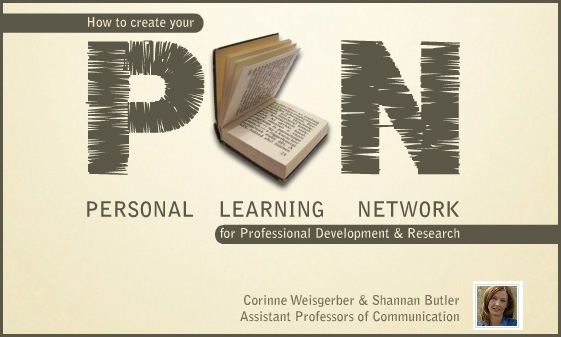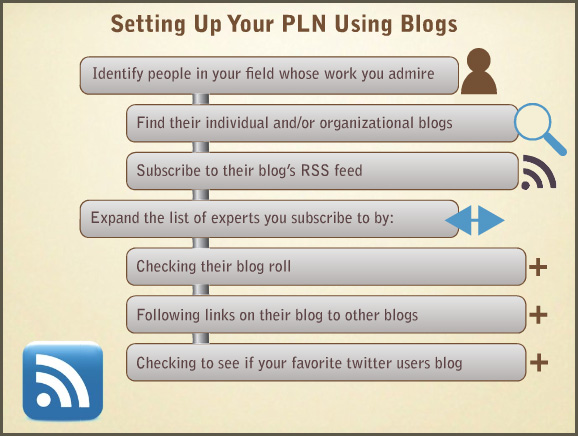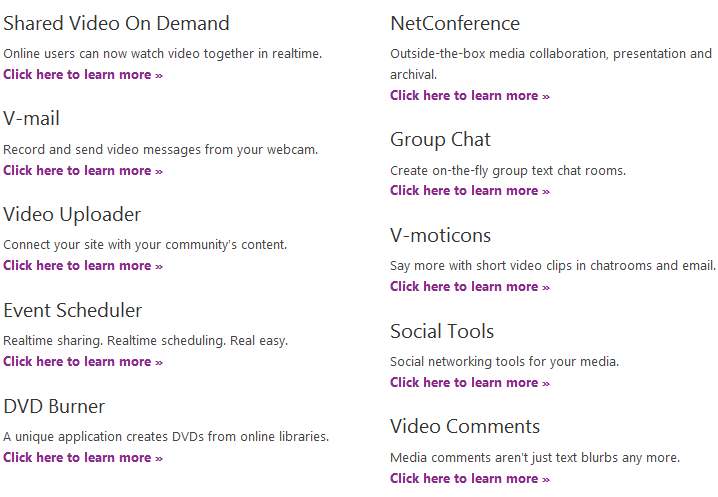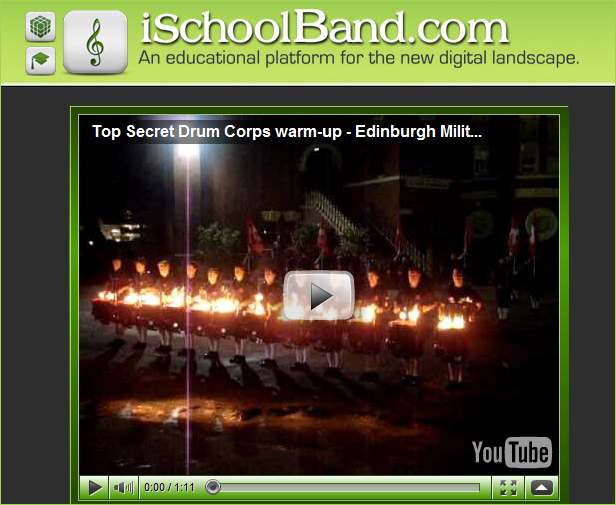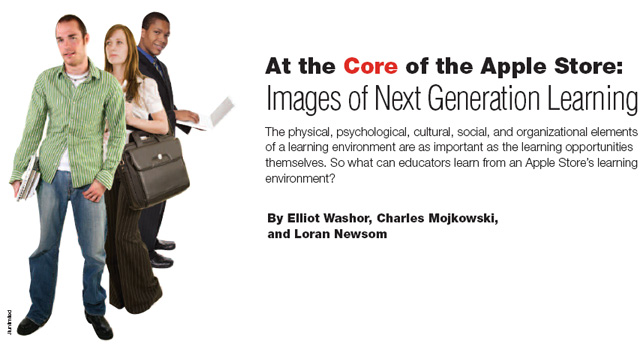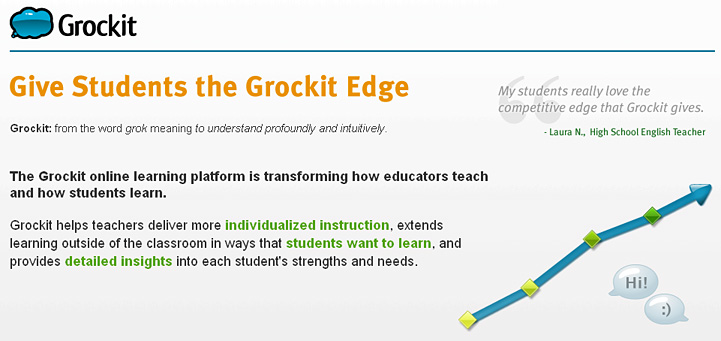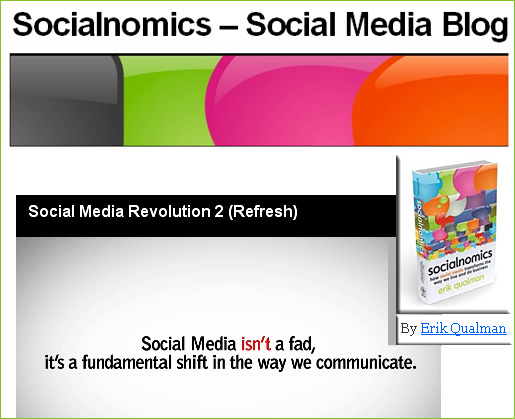Integrating social media into online education — from Faculty Focus by John Orlando
Online collaboration: New innovations pave the way for convergence — from prnewswire.com
Merger of television and computer takes giant step closer as innovative online tool suite is released
CALABASAS, Calif., Aug. 16 /PRNewswire/ — Anticipating the coming paradigm shift that will merge your television and your computer, NxtGenTV has just released the most cohesive system of online tools to facilitate the ultimate interactive communication platform. Four years of innovating has resulted in NetConference.com, an elegant, easy-to-use online meeting system that supports the diverse requirements of single users, small and medium size businesses as well as enterprise and nonprofit organizations. Creating a new opportunity for the global audience to interact online in even greater and more efficient ways is only one of the many benefits of building a social media broadcasting system that facilitates Communication, Collaboration, Presentation and Education.
An industry leader in online games, apps, widgets, banners and rich media development for major entertainment brands, The Illusion Factory created a new company, NxtGenTV to develop and patent cutting-edge online technologies such as shared synchronized visual media and other key innovations that will further blur the lines between computers and television. “We have been passionate about creating the cumulative new systems that will drive Convergence,” shares Brian Weiner, CEO of The Illusion Factory, “our creation of NxtGenTV will lead the push for truly interactive television.”
Xplana Announces a Major Innovation in Student Learning — from Xplana’s blog
Here is the press release that went out today regarding the public launch of Xplana.com. I’ll be posting more about the launch later this week, but I thought I would re-post this in the meanwhile.
This August, Xplana, a division of MBS Service Company, Inc., will launch the first ever platform that bridges social networking and traditional elements of student learning to transform the way students manage their academic lives.
“Xplana is best described as the social network for learning,” Dennis Flanagan, Chief Executive Officer of Xplana, said. “It’s the first ever ’social learning’ platform designed to bring the entire student learning life into a single location.”
Connectivism in the Enterprise — G. Siemens (July 2010)
Organizations are today faced with continually evolving markets, rapid knowledge growth, competitive pressures from emerging countries, and increased complexity in business development and strategy execution. This climate requires an evaluation of how existing learning, knowledge management, and capacity building activities support organizations in fulfilling their mandate and vision.
Traditional course-based learning and development is not sufficiently agile, flexible, or context-driven to address the pressures facing the enterprise. Three primary concerns exist with course-based learning and instructional design…
Blackboard and Follett Higher Education Group partner to integrate digital texts with online course experience
Blackboard Learn also to feature CafeScribe for social networking
ORLANDO, Fla., July 14, 2010 /PRNewswire via COMTEX/ —
Blackboard Inc. (Nasdaq: BBBB) and Follett Higher Education Group today announced a partnership to give students the ability to purchase and use digital textbooks directly in Blackboard Learn(TM) with a free integration, available today, that brings interactive texts into the course experience.
The integration streamlines the way that instructors assign texts and the ease with which students can access and use them. It also provides access to Follett’s CafeScribe(R), an e-textbook and social networking platform that gives students and instructors the ability to read, highlight, annotate, share notes, and form campus and worldwide study groups among a range of CafeScribe features that make digital texts more interactive.
Why you should be using social bookmarking tools — from Faculty Focus, by John Orlando, PhD in Faculty Development
Still storing your bookmarks on your browser? That is soooooooooo 2007. It’s time to get with the program and start using social bookmarking. Social bookmarking is a “two-for” — it will save you time and provide a way for students to collaborate on their research.
Bookmarks were originally saved on a browser, which creates a couple of problems. One, your bookmarks are not available if you are on another computer. Two, these bookmarks cannot be searched. New bookmarks are simply thrown into the bottom of the list, which becomes unmanageable once you accumulate a lot of sites.
Social bookmarking has changed all that. Tools such as Delicious and Diigo allow users to store their bookmarks on a password protected website that can be accessed from any computer on the Internet. Better yet, users can add searchable tags that make sorting and finding bookmarks a breeze. If I want to find that interesting website on social media in education, I type “education” into my Delicious system, and then can sort by the subcategory of “social media” within that tag, which brings me to exactly what I want.
Both Diigo and Delicious allow users to form groups that let all members to share their bookmarks. I can create a group in Delicious that is just open to my students. When they find a good website, they are instructed to share it with others in the class. They are also required to provide a short description of each site in the bookmark, including why it is of value. This forces students to think about and articulate the value of different sites in comparison to one another.
From DSC:
What would be nice here is to have a group that exists beyond a particular course. Current students could contribute bookmarks to that group, but they could also review the bookmarks of students who had already taken this course.
Also, I’m taking this more seriously because everytime my system gets upgraded, I forget to save my bookmarks file and I end up losing all of my previous bookmarks.
Moving the social networked learning (the Landing) forward — George Siemens
To foster these types of interactions, programs need to think about social networking tools at a higher level than an individual course (for obvious reasons – a course is a short-term construct whereas social spaces have greater permanence). Designers, deans, and faculty should plan for social interaction at the program-level: design for social interaction between courses much in the same way that social interaction (in Moodle) is often designed into courses).
Most learners tend to the social. They seek interactions, connectedness. Sometimes, however, these interactions require a bit of social lubrication. To this end, a program director (or designer) should plan to include social events and activities in their Landing group: planned conversations, Q & A, recorded tutorials, live interactions (in Elluminate or on Skype), treasure hunts, etc.
Social connectedness needs nurturing. While we are still at the early stages or research on this, my bias is that successful uses of the Landing at a program level will be determined by fostering intentional and planned social activities. But this isn’t really anything new, is it? Any successful community has regular social events and activities – concerts, festivals, and community suppers. Finding out how to best lubricate social interactions is an important area of research.
The Future of Online Socializing— from the Pew Research Center’s Internet & American Life Project and Elon University’s Imagining the Internet Center
Overview
The social benefits of internet use will far outweigh the negatives over the next decade, according to experts. They say this is because email, social networks, and other online tools offer “low friction” opportunities to create, enhance, and rediscover social ties that make a difference in people’s lives. The internet lowers traditional communications constraints of cost, geography, and time; and it supports the type of open information sharing that brings people together.
Also see:
At the Core of the Apple Store: Images of Next Generation Learning [PDF file]
What can we learn from the Apple Store as a learning environment?
Like Facebook, but for learning — from eSchoolNews.com by Laura Devaney
Combining social networking with studying, Grockit encourages academic success through peer interaction
Aiming to engage students who are multitasking with different forms of technology, companies are creating collaborative learning spaces online where students can help one another solve homework problems and study—all while building important 21st-century skills.
One such social-networking study site is Grockit, which currently offers test-prep services and is expanding its focus to include math and English for students in grades 8-12, with history and science soon to follow. Grockit has opened enrollment for a free Summer Enrichment Academy, which is designed to keep students from falling behind during summer vacation as they participate in collaborative group study forums online.
Social Media Revolution 2 (Refresh) — from Erik Qualman [via G. Siemens]
Per George:
Erik Qualman’s socialmedia revolution video has been updated. He starts by asking: “Is social media a fad? Or the biggest shift since the industrial revolution?”. While the stats provided are interesting, his questions mistake the effect for the cause. It’s like asking, 150 years ago, “is the railway a fad? Or the biggest shift since the agricultural revolution?”. Of course, the railway was part of the industrial revolution. But it was needed largely because of other trends (economic, societal, technological innovation, etc.). In the same sense, social media is an expression, a carrier, of fundamental changes around information and interaction. It is not, however, the change itself. Three years ago, I communicated a similar concept in It’s not about the tools. It’s about the change*.
*In that posting George states:
It’s the change underlying these tools that I’m trying to emphasize. Forget blogs…think open dialogue. Forget wikis…think collaboration. Forget podcasts…think democracy of voice. Forget RSS/aggregation…think personal networks. Forget any of the tools…and think instead of the fundamental restructuring of how knowledge is created, disseminated, shared, and validated (emphasis DSC).
But to create real change, we need to move our conversation beyond simply the tools and our jargon. Parents understand the importance of preparing their children for tomorrow’s world. They might not understand RSS, mashups, and blogs. Society understands the importance of a skilled workforce, of critical and creative thinkers. They may not understand wikis, podcasts, or user-created video or collaboratively written software. Unfortunately, where our aim should be about change, our sights are set on tools. And we wonder why we’re not hitting the mark we desire. Perhaps our vision for change is still unsettled. What would success look like if we achieved it? What would classrooms look like? How would learning occur? We require a vision for change. It’s reflected occasionally in classroom 2.0 or enterprise 2.0 projects. But the tool, not change centric, theme still arises. We may think we are talking about change, but our audience hears hype and complex jargon.
What is your vision for change?









